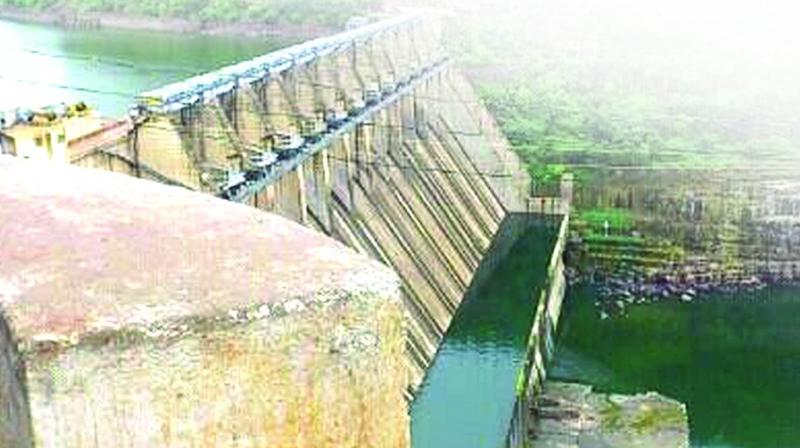Water level dips as Telangana, AP fight
Water stands at about 500 ft at Nagarjunasagar, while the average at Srisailam has fallen below 450-500 tmc ft.

Hyderabad: The mighty Srisailam and Nagarjunasagar reservoirs were storing about 700,000 million cubic feet of Krishna waters until a decade ago. They used to irrigate more than half the 23 districts of undivided Andhra Pradesh.
Since then, the vagaries of the monsoon, lack of a provision to share water during times of deficit, and, lately, mutual suspicion between TS and AP have contributed to their decline.
The last time Nagarju-nasagar was full was in 2013. Water now stands at about 500 ft, which is an all-time low, said Nagarjunasgar dam chief engineer S. Suneel.
The Srisailam dam used to receive, on an average, 900 tmc ft of water. Srisailam dam chief engineer Narayana Reddy said the average has fallen below 450-500 tmc ft.
This is a matter of immense concern beca-use both the Telugu states have planned to build a number of projects on the river Krishna. Besides, a large extent of land and many projects in both states depend on the two dams. The two dams largely get water from Karnataka’s Almatti and Narayanpur dams. The upstream state does not release water even when its dams are full because it is not bound to do so.
This year, the two Karnataka dams are brimming over and supplying water to their command areas. Thanks to the Godavari water diversion to the Krishna basin, farmers in the Krishna delta in AP have started agricultural operations.
Srisailam and Nagarju-nasagar, situated midway in the course of the Krishna, have water below the minimum draw down or dead storage level.Though both governments agree that the situation is worsening, there is no common strategy to divert and utilise Godavari water for the dams.
The YS Rajasekhar government had a plan to link the Godavari with the Krishna through the Dummugudem anicut in Kothagudem district to the Nagarjunasagar tail pond project (Adavide-vulapally). Water can be pumped back to Nagarjunasagar from the tail pond project using reversible turbines that are already in place.
The plan was shelved after the TRS government came to power in 2014 and confined the Dummugudem link lift scheme to the erstwhile Khammam district.
The goverment believes that there is no guarantee that the Andhra Pradesh government would share the common cost of the project, though it would also benefit.

